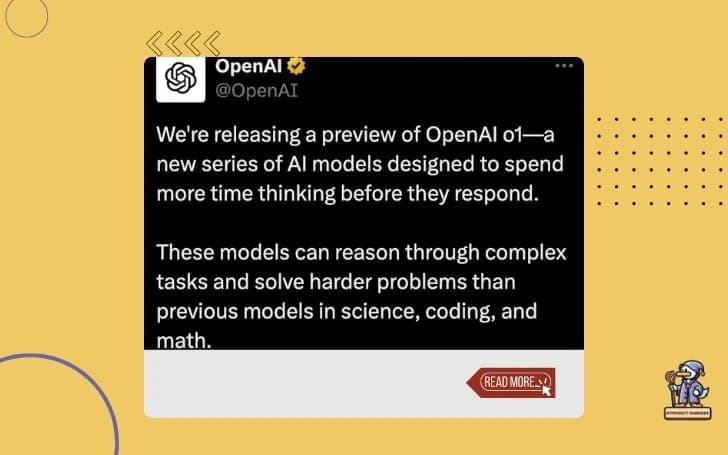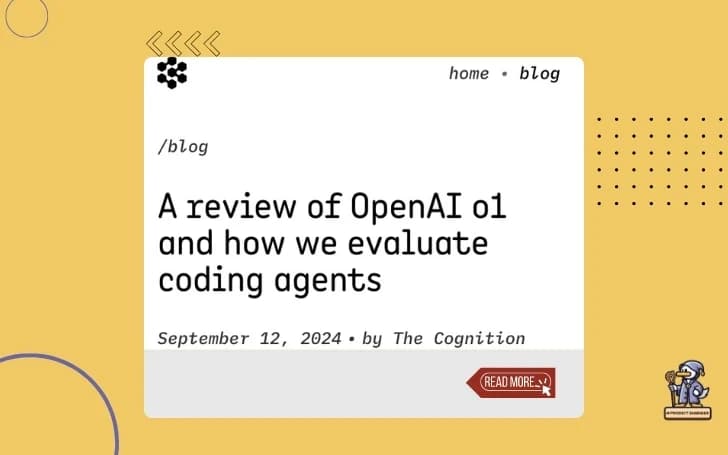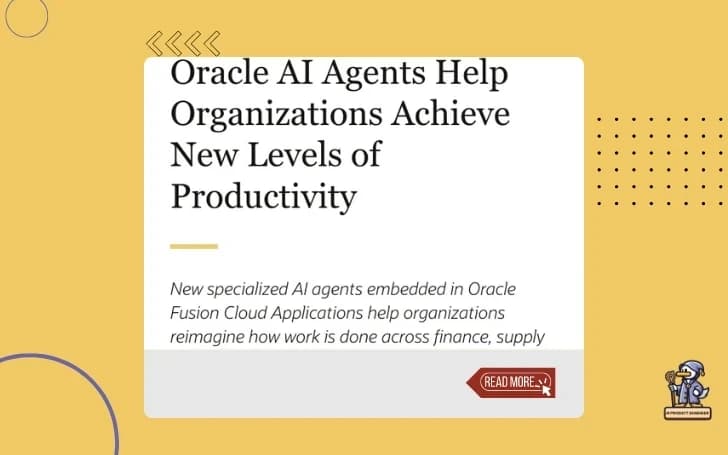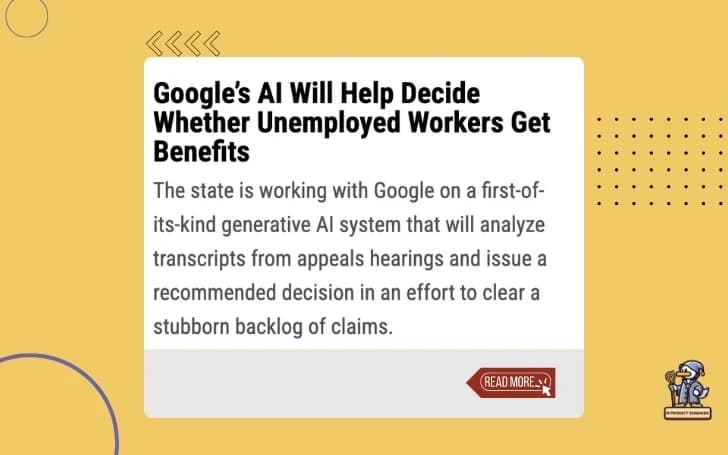Introduction: The AI Landscape Shifts
Hello, fellow Ducktypers! Today, we're diving into a game-changing development that's setting the tech world abuzz. OpenAI has just unveiled their latest creation, the O1 model series, and it's not just another incremental update – it's a leap towards true artificial reasoning.
But before we jump in, I want to hear from you: What's your take on AI's ability to reason? Drop your thoughts in the comments below!
The O1 Revolution: More Than Just Another Model

OpenAI's O1, nicknamed "Strawberry," is making waves with its promise of enhanced reasoning capabilities. Unlike its predecessors, O1 is designed to think more before responding, tackling complex tasks in science, coding, and math with unprecedented skill.
According to OpenAI, O1 outperforms previous models in over 50,000 matchups. It's not just faster; it's smarter, showing improvements in safety and robustness. Imagine an AI that can solve intricate scientific problems or debug complex code – that's the potential of O1.
Key Features of O1:
- Enhanced reasoning capabilities
- Improved performance in science, coding, and math
- Increased safety and robustness
But here's where it gets interesting: O1 introduces a new "thinking" step in ChatGPT. Users can now peek into the AI's reasoning process, although this feature comes with its own set of controversies.
Question for you: How do you think this "peek behind the curtain" will impact our interaction with AI? Share your predictions below!
The Technical Marvel Behind O1
O1 isn't just about flashy features. It's built on solid technical innovations:
- Reasoning Tokens: O1 is trained to add new reasoning tokens, extending the output limit to over 30,000 tokens.
- Impressive Benchmarks: O1 ranks in the 89th percentile on competitive programming questions and exceeds human PhD-level accuracy in physics, biology, and chemistry problems.
- Scaling Laws: Perhaps most importantly, O1 demonstrates scaling laws for test-time compute, potentially revolutionizing how we approach AI training and inference.
Dr. Jim Fan highlights that this development could be the most significant since the Chinchilla scaling law in 2022. We're seeing two curves working together, opening new possibilities in AI research.
Industry Reactions and Implications

The release of O1 has sparked intense discussions in the AI community. While some praise its problem-solving abilities, others question whether the improvements justify its high cost – a whopping $60 per million tokens.
Cognition Labs worked closely with OpenAI to evaluate O1's capabilities with their coding agent, Devin. Their findings suggest significant improvements for agentic systems focused on coding applications.
But here's the million-dollar question: Is O1 worth the hype and the price tag? What's your opinion? Let me know in the comments!
Beyond O1: The Changing AI Landscape

While O1 is grabbing headlines, other developments are reshaping the AI industry:
-
Klarna's Bold Move: The fintech giant is replacing Salesforce and Workday with AI-powered in-house software, signaling a trend of AI eating into traditional SaaS markets.
-
Oracle's AI Agents: Oracle has announced over 50 role-based AI agents for enterprise use, highlighting the growing role of AI in business operations.
-
AI in Creative Industries: Audible is creating AI voice replicas of select audiobook narrators, while professional writers are increasingly using ChatGPT to enhance their work.
-
AI in Government: Nevada plans to use Google's generative AI to decide on unemployment benefits, raising questions about AI's role in public services.
I'm curious: Which of these developments do you think will have the biggest impact on society? Share your thoughts below!
Wrapping Up: The Future of AI Reasoning

As we've seen, O1 and other recent developments are pushing the boundaries of what AI can do, especially in the realm of reasoning and complex problem-solving. But with great power comes great responsibility – and a host of new questions.
- How will these advancements change the way we work and create?
- What ethical considerations should we be mindful of as AI becomes more integrated into critical decision-making processes?
- How can we ensure that the benefits of AI are distributed equitably across society?
These are big questions, and I want to hear your thoughts! Leave a comment with your perspective on the future of AI reasoning and its impact on our world.
Thank you for joining me on this deep dive into the world of AI. If you found this helpful, don't forget to like and subscribe to stay updated on the latest in AI developments. Until next time, keep questioning, keep exploring, and keep pushing the boundaries of what's possible with AI!


